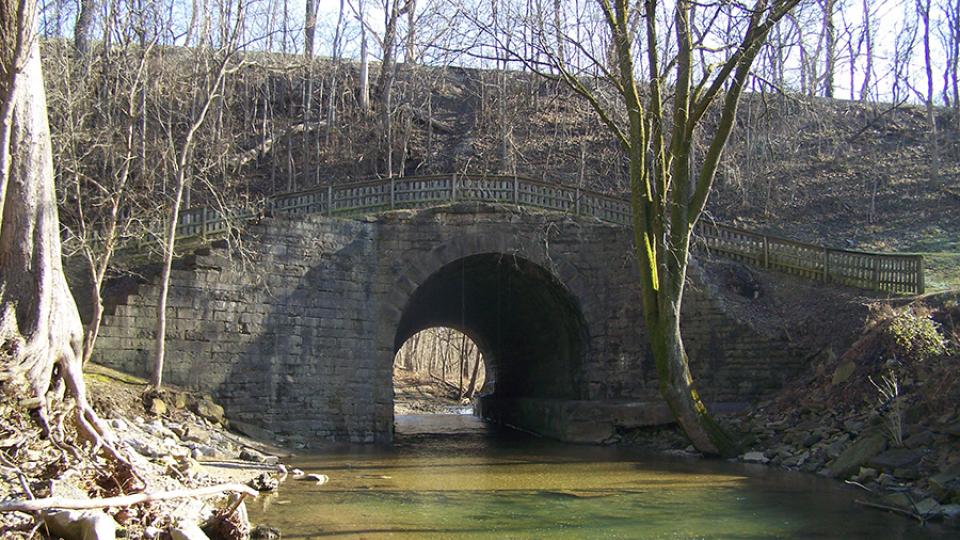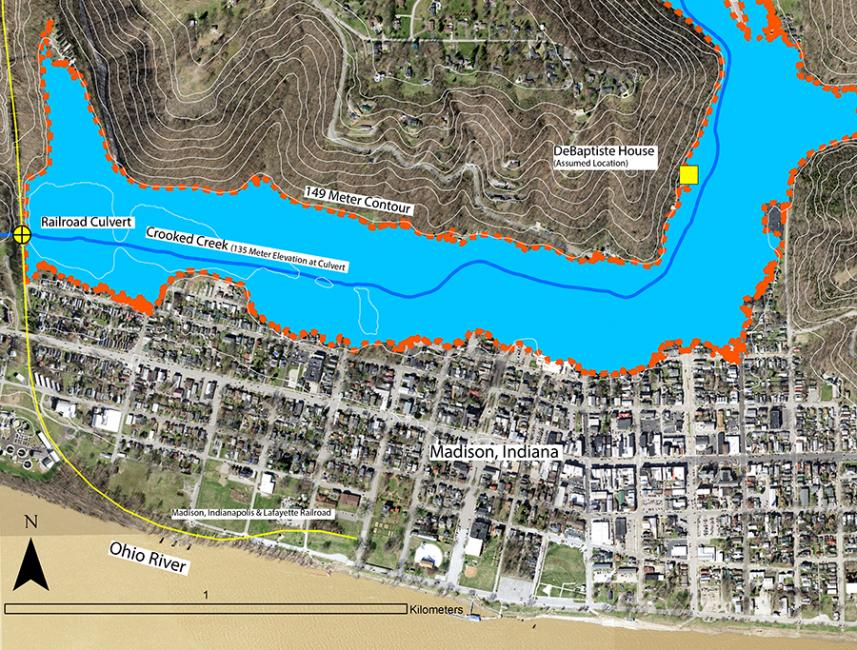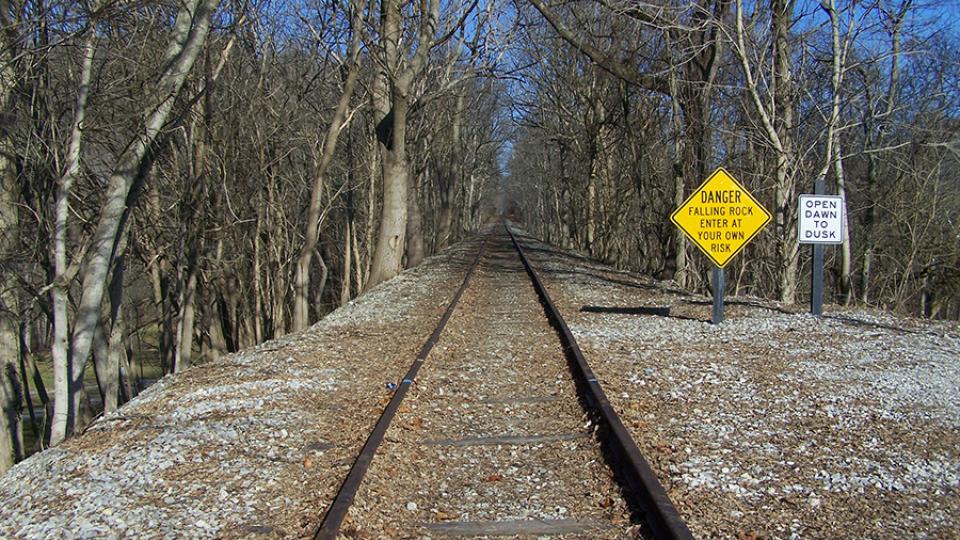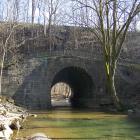George DeBaptiste (1814–1875) was an African American abolitionist and a prominent figure in the Underground Railroad (UGRR), the network used by African American slaves in the Southern US to escape to free Northern states. He resided in Madison, Indiana, between 1838 and 1846, when he moved his family to Detroit, Michigan, following local race riots against UGRR leaders. In an effort to preserve the heritage of this icon’s legacy, preservationists used historical documentation to determine the likely location of DeBaptiste’s house. We performed tree-ring analysis to confirm if the existing house on the property was, in fact, DeBaptiste’s house. Determining the construction date of a structure using tree rings is performed by obtaining samples from a structure’s timbers and matching their tree-ring growth patterns to regional historic growth patterns. Analysis showed that the structure’s timbers were harvested sometime after the spring of 1846. These results were puzzling since DeBaptiste left Madison in 1846. It is unlikely that DeBaptiste would have constructed a new structure while racial tensions were reaching a fever pitch. Investigating Madison’s history provided a potential clue.

Photograph of Crooked Creek at its location on the north boundary of Madison, Indiana (looking east).
Photograph of Crooked Creek at its location on the north boundary of Madison, Indiana (looking east).
© Christopher Baas & Darrin L. Rubino
The copyright holder reserves, or holds for their own use, all the rights provided by copyright law, such as distribution, performance, and creation of derivative works.
On 3 September 1846 the Crooked Creek Flood devastated the northern sections of Madison. The Madison Republic reported the horrific event. A two-hour rainstorm caused “mad waters to come tumbling down from every hollow,” converting Crooked Creek “into a lake or broad river.” Witnesses reported how “houses, animals, fences, barrels, and all kinds of household furniture, came whirling along, like bubbles.” The debris “choked” the Madison, Indianapolis & Lafayette railroad culvert, ultimately impounding water “so as to cover the whole space … north of the city to the hills beyond.” When the embankment failed, the “torrent” swept away a section of the railroad embankment, opening a 100-meter gap. Eleven people died; several were “swept off with their dwelling.” An 1871 oral history of the flood describes how house and bridge sites upstream and within 180 meters of the DeBaptiste house were destroyed. Dugan Hollow, a tributary of Crooked Creek upstream from the house site, dumped stormwater into the creek, fueling the destruction.
Could the flood explain why we found a house constructed in 1846 rather than one built concurrently with or prior to DeBaptiste’s time in Madison? We were puzzled by how DeBaptiste’s home, more than 1.6 kilometers upstream from the railroad culvert, could have been affected by the storm and wondered if we could demonstrate that the flash flood destroyed his house. Madison was platted on a terrace between the Ohio River and bluffs that rise more than 100 meters above the town. Crooked Creek originates on the bluff tops, runs between the base of the bluffs and the north side of the town, and empties into the Ohio immediately west of Madison. Branches of the creek, like Dugan Hollow, drain adjacent hills.
The Madison, Indianapolis & Lafayette Railroad is the state’s first railroad (1841), and infamous for its “incline,” a section of track with the steepest slope of any railroad in the country (412 meters rise over 2.1 kilometers of track). Construction required the removal of as much as 38 meters of limestone. To establish a consistent slope from the city to the bluff top, Crooked Creek valley was filled with nearly 21 meters of stone and soil; the creek was channeled in a culvert beneath the embankment.

Photograph of the culvert carrying Crooked Creek beneath the Madison, Indianapolis & Lafayette Railroad. The devastation of the Crooked Creek Flood was intensified when the culvert became clogged with debris. The historic culvert was destroyed in the flood.
Photograph of the culvert carrying Crooked Creek beneath the Madison, Indianapolis & Lafayette Railroad. The devastation of the Crooked Creek Flood was intensified when the culvert became clogged with debris. The historic culvert was destroyed in the flood.
© Christopher Baas & Darrin L. Rubino
The copyright holder reserves, or holds for their own use, all the rights provided by copyright law, such as distribution, performance, and creation of derivative works.
With computer-aided technology, we tested a scenario where the railroad culvert clogs with debris to create a pool of water extending upstream to the DeBaptiste property. DEM data (1 meter resolution) was used in Geographic Information Systems Software to identify key elevations for the DeBaptiste property (149 meters representing 0.3 meters of floodwater on the property), the creek at the culvert (135 meters), and the top of the railroad embankment (155 meters, or 20 meters above the creek). We noted that DeBaptiste’s property is only 41 meters from, and 6 meters higher than, Crooked Creek. We acknowledged the limitations that historic accounts included little regarding water depth and that our current topographic data may not precisely replicate Madison’s 1846 landscape. We highlighted the house’s 149-meter contour elevation to see if a reservoir extended from the railroad culvert to the house site in the case that the culvert was closed. As a result, a 73-hectare pool is created that (like that described in the article from the Madison Republic) extends upstream beyond the house and the confluence with Dugan Hollow.

(Click to enlarge image)

(Click to enlarge image)


Our test was able to demonstrate the severity of the disaster. Hypothetically, floodwater pools to a depth of 13 meters at the railroad embankment, and the reservoir extends to the DeBaptiste property (and 1.6 kilometers beyond). While the result of the study does not prove the house was lost in the disaster, it does suggest that if the initial flooding did not destroy the house, the flow from Dugan Hollow and the rush of floodwater following the breach in the embankment could have severely damaged the structure.
Combining tree-ring research, historical documents, and GIS software allowed us to hypothesize the fate of George DeBaptiste’s Madison home. The house historians sought to preserve, though found on DeBaptiste’s former property, was likely built once Crooked Creek and its tributaries returned to their banks.
How to cite
Baas, Christopher, and Darrin L. Rubino. “The Search for George DeBaptiste’s House: The Crooked Creek Flood of 1846.” Environment & Society Portal, Arcadia (Spring 2020), no. 15. Rachel Carson Center for Environment and Society. doi.org/10.5282/rcc/9019.
ISSN 2199-3408
Environment & Society Portal, Arcadia
 This work is licensed under a Creative Commons Attribution 4.0 International License.
This work is licensed under a Creative Commons Attribution 4.0 International License.
2020 Christopher Baas & Darrin L. Rubino
This refers only to the text and does not include any image rights.
Please click on an image to view its individual rights status.
- Baas, Christopher, and Darrin L. Rubino. “Pressing Hay in the Commonwealth: Using Tree-ring Growth Patterns to Date the Construction of Two Kentucky Beater Hay Press Barns.” Journal of Kentucky Archaeology 3 (2014): 2–31.
- Baas, Christopher, & Darrin L. Rubino. “Using Tree-ring Growth Patterns to Identify the Date of Construction of Community House No. 2, New Harmony, Indiana.” Indiana Archaeology 8 (2013): 11–31.
- Furnish, Mark A. “Black Hoosiers and the Formation of an Antislavery Stronghold in the Central Ohio Valley.” Ohio Valley History 16 (2016): 6–27.
- Madison Republic. “The Flood.” Madison, Indiana, 9 September 1846.
- Rubino, Darrin L., and Christopher Baas. Dating Buildings and Landscapes with Tree-Ring Analysis: An Introduction with Case Studies. London: Routledge, 2019.










